
Explore the birthplace of Acadian Culture with Parks Canada
Acadians are the descendants of French settlers who arrived in Nova Scotia in the early 1600s. Parks Canada invites you to learn more about the story of the Acadians, their resilience and passion for life and the preservation of their culture at these National Historic Sites.
Parks Canada protects, honours, and shares the rich history of the Acadian people through several protected places – enjoy your visit!
Mainland Nova Scotia | Cape Breton Island, Nova Scotia | New Brunswick | Map | Parks Canada Discovery Pass
Mainland Nova Scotia

Beaubassin and Fort Lawrence National Historic Sites
Discover two national historic sites, once home to the Mi’kmaq, Acadians, French, and British. Witness the legacy of a vibrant Acadian community, which became a crucial battleground in the 17th and 18th-century conflict between Britain and France.
Visitors are invited to admire the landscape where the remnants of the village of Beaubassin and Fort Lawrence are hidden below the surface.
Plan your visit to Beaubassin and Fort Lawrence National Historic Sites
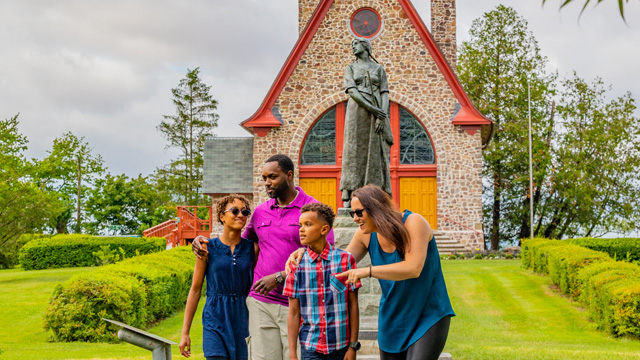
Grand-Pré National Historic Site
Located in the heart of a UNESCO World Heritage Site, Grand-Pré is a profound memorial to the tragic upheaval and resilience of the Acadian people. It was the largest Acadian settlement before the Deportation of 1755-1763.
Captivating presentations, exhibits, and guided tours share the story of the Great Upheaval and the strength of the Acadian people.
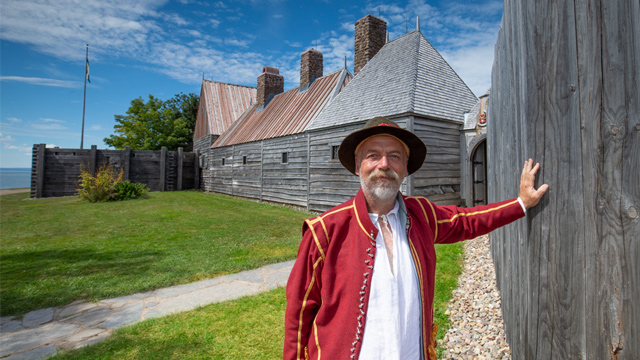
Port-Royal National Historic Site
In 1604 French nobleman, Pierre Dugua, Sieur de Mons, established a settlement on Saint Croix Island – a colonizing venture that eventually led to a permanent French presence in Acadie. In 1605, following a difficult winter, the settlers moved to present day Port-Royal and built the Habitation – a reconstruction is what you see today.
Meet the French settlers who lived and created alliances with the Mi’kmaw who helped them survive.
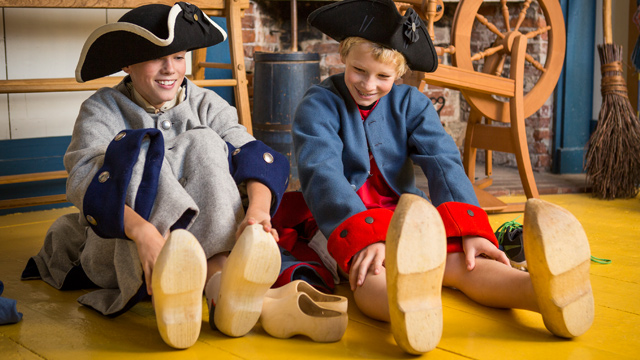
Fort Anne National Historic Site
After the Habitation was destroyed by the English in 1613, the French returned in 1636 under the leadership of Charles de Menou d’Aulnay. The colonists set up homesteads on the land surrounding present-day Fort Anne. It was at this time the colonists started referring to themselves as Acadians.
Join a guided Acadian tour and see where the remains of the Acadian chapel and cemetery are believed to be located. Exhibits inside the Officers’ Quarters Museum provide a glimpse into Acadian life.

Melanson Settlement National Historic Site
Acadian settlements prospered along the fertile Annapolis River, cultivating tidal marshlands reclaimed through an extensive system of dykes.
Wander the landscape and take in the view.
Plan your visit to Melanson Settlement National Historic Site
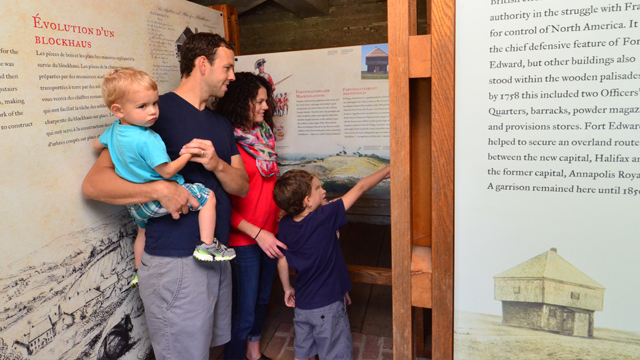
Fort Edward National Historic Site
Fort Edward Blockhouse played a central role in the military struggles between the British, Acadians, and Mi’kmaw people. It also served as a prison and deportation centre for over 1,000 Acadians from nearby villages.
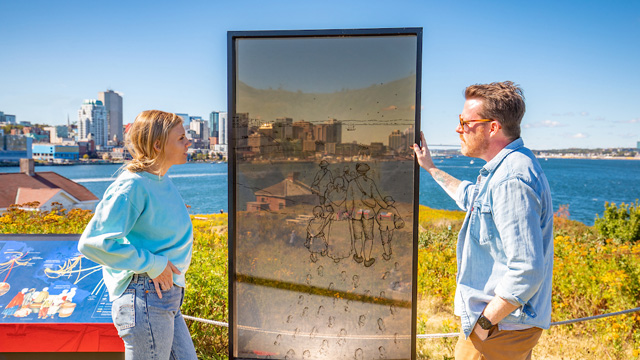
Georges Island National Historic Site
Over 900 Acadians were imprisoned on the island, located in the centre of Halifax Harbour. Housed in two sheds, often exposed to the elements, many perished in the terrible conditions.
Hear one family’s story of their imprisonment as you view the Halifax waterfront.

Sable Island National Park Reserve
The Sable Island horses are believed to be descendants of animals introduced to the island in the 1700s. The generally accepted idea is that Boston minister Andrew LeMercier first introduced the horses to the island in 1737 and 1738.
Sometime after 1755, Boston ship owner Thomas Hancock shipped horses to Sable Island. The horses were from the deported Nova Scotian Acadians that he transported to New England colonies during the period known as the Great Upheaval.
Cape Breton Island

Cape Breton Highlands National Park
Nestled along the coastline of northern Nova Scotia, Cape Breton Highlands National Park spans 950 square kilometers of rugged wilderness. The park reflects a deep connection between land, sea, and people, where diverse cultures have shared their histories.
Along its western coast, where Acadian communities have thrived for centuries, visitors can explore trails that meander through the Acadian Forest, see remnants of old Acadian homes, or participate in an Acadian interpretation program at the Mkwesaqtuk/Cap-Rouge campground.
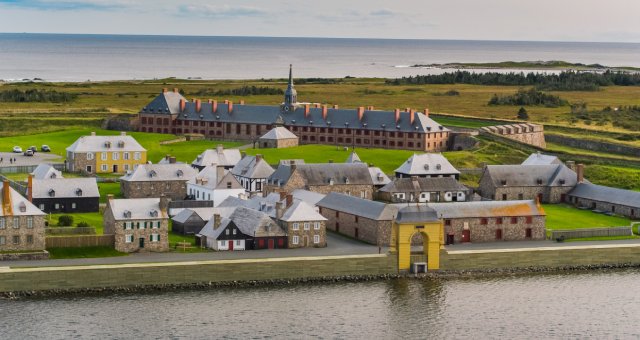
Fortress of Louisbourg National Historic Site
During the18th century, Acadians were an integral part of Louisbourg's cosmopolitan society. Servants, fishers, artisans, merchants, and members of the elite played an active role in this bustling fishing port. Among the first Acadians to arrive in Louisbourg were women who married French officers from the Compagnies franches de la Marine, originally stationed in Acadia. Louisbourg is also the birthplace of Jeanne Dugas, a figure of national historic significance.
Today, the Fortress of Louisbourg is the largest historical re-enactment in North America, offering a multitude of activities for visitors to enjoy.
Plan your visit to Fortress of Louisbourg National Historic Site
New Brunswick

Boishébert and Beaubears Island Shipbuilding National Historic Sites
Site of Acadian refuge established in the mid 1750s and important site for the shipbuilding industry in the early 19th century.
Learn about the stories of mi’kmaw culture, adventurous Voyageurs, Acadian courage and ambitious shipbuilding. Journey to a fascinating archaeological site in a scenic island setting along the meandering Miramichi River.
Plan your visit to Boishébert and Beaubears Island Shipbuilding National Historic Sites
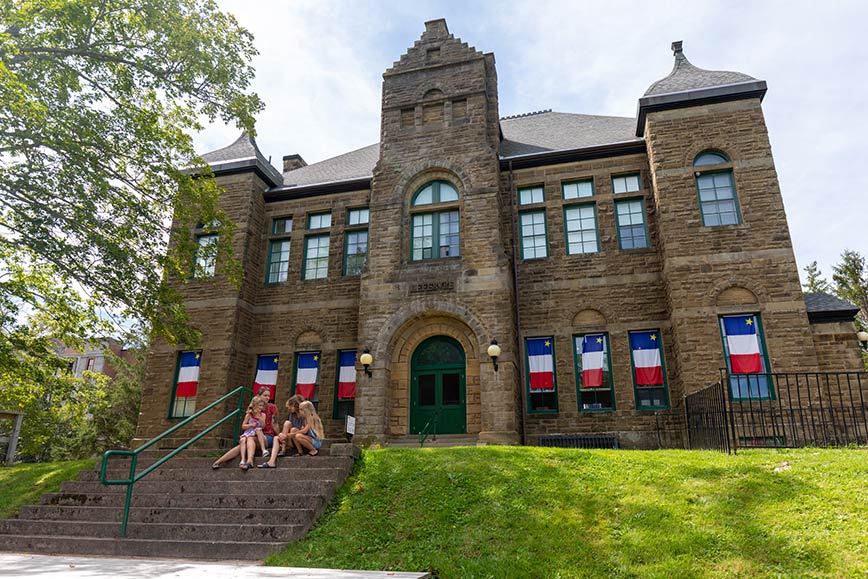
Monument Lefebvre National Historic Site
A symbol of contemporary Acadie, this historic monument commemorates Father Camille Lefebvre and his initiative to create the first French language, degree-granting college in Atlantic Canada.
Experience the triumphs of the Acadians through artefacts, film, performances, a cultural café and the permanent exhibit.
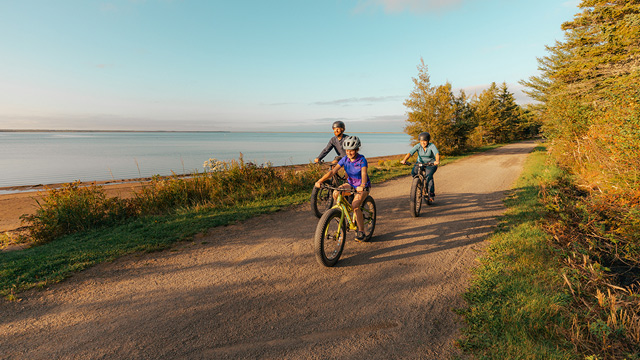
Kouchibouguac National Park
Discover a national park on New Brunswick’s Acadian Coast where lush Acadian forests lead to colorful salt marshes and warm ocean beaches. Twenty-five kilometers of golden sand dunes create sheltered estuaries and calm waters for all to enjoy. At night, this Dark Sky Preserve is a celestial masterpiece and each of these natural wonders intertwines with fascinating Mi’kmaq , Acadian, and other settlers’ cultures.
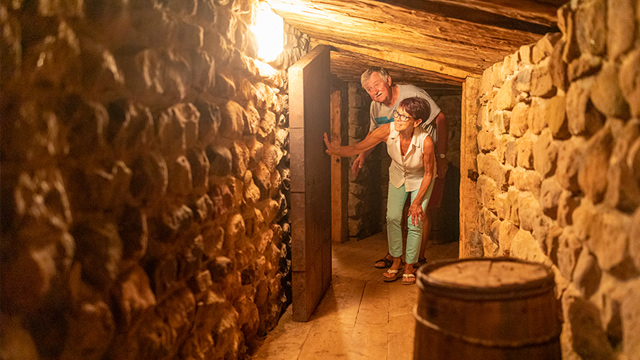
Fort Beauséjour – Fort Cumberland National Historic Site
The fort of Beauséjour played a crucial role in the rivalry between France and Britain in North America. It was in 1755 at this strategic spot on the Isthmus of Chignecto that the tragic events of the Deportation began to unfold.
Discover a star-shaped fort, with fascinating exhibits and artifacts, and visit the site's spectral remains, barracks and ramparts.
Plan your visit to Fort Beauséjour – Fort Cumberland National Historic Site

Revealing Chignecto: The Stories Within
Parks Canada’s exhibit, “Revealing Chignecto: The Stories Within,” looks deeply at the history of this region and focuses on its archaeology: vestiges that represent millennia of Mi’kmaw communities, Acadian villages, and 18th-century forts. Memories live here, across Chignecto’s lands and waters.
Plan your visit to "Revealing Chignecto: The Stories Within"
Parks Canada-administered places featuring Acadian culture in Nova Scotia
Parks Canada-administered places featuring Acadian culture in Nova Scotia
Map legend
![]() Parks Canada-administered places
Parks Canada-administered places
![]() Parks Canada-administered places to stay overnight
Parks Canada-administered places to stay overnight
New Brunswick
- Boishébert and Beaubears Island Shipbuilding National Historic Sites
- Monument Lefebvre National Historic Site
- Kouchibouguac National Park
- Fort Beauséjour – Fort Cumberland National Historic Site
Mainland Nova Scotia
- Beaubassin and Fort Lawrence National Historic Sites
- Fort Anne National Historic Site
- Fort Edward National Historic Site
- Grand-Pré National Historic Site
- Melanson Settlement National Historic Site
- Port-Royal National Historic Site
- Georges Island National Historic Site
- Halifax Citadel National Historic Site

Discovery Pass: access to multiple locations
Save time at the gate. An annual Parks Canada Discovery Pass covers admission to more than 80 destinations for 12 months.
- Date modified :